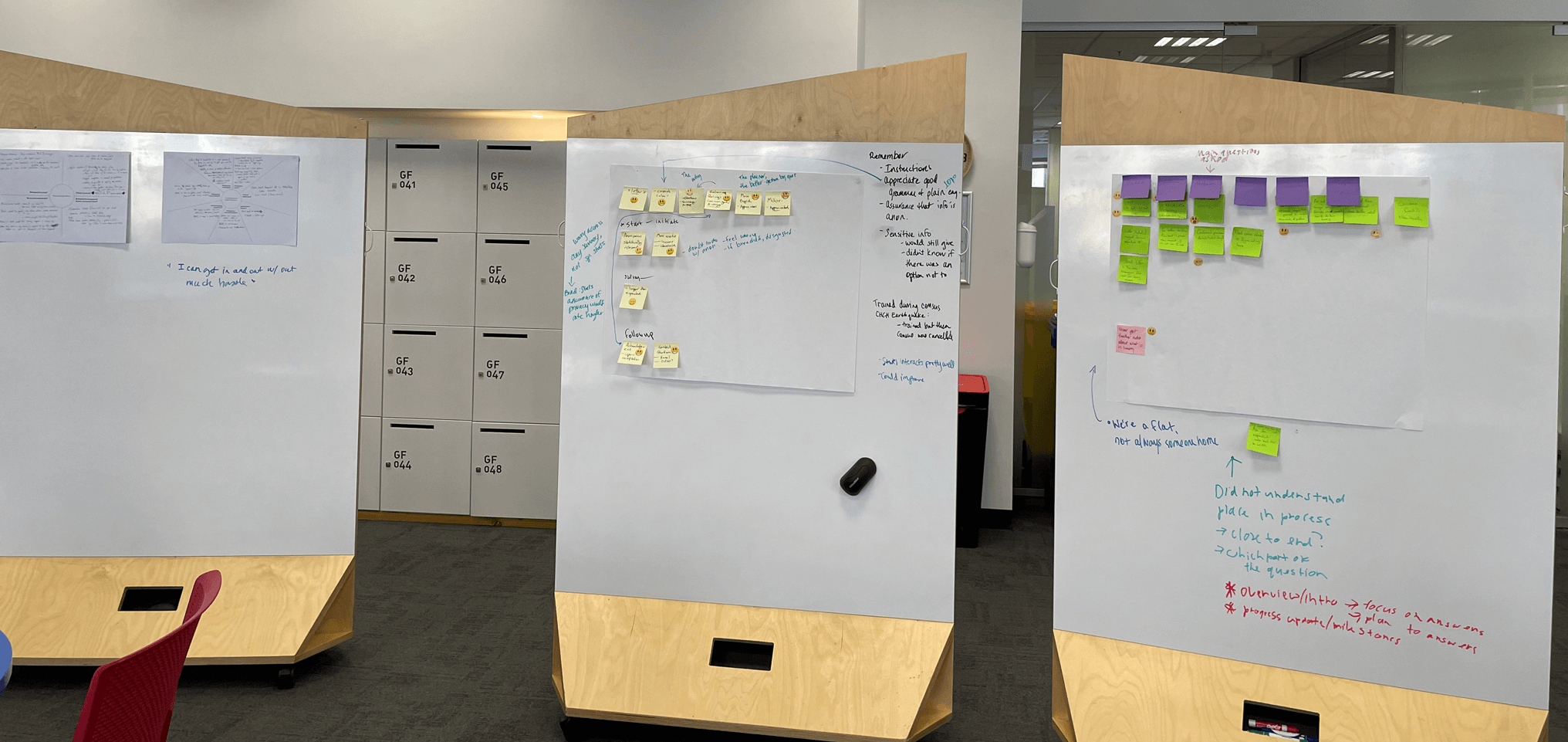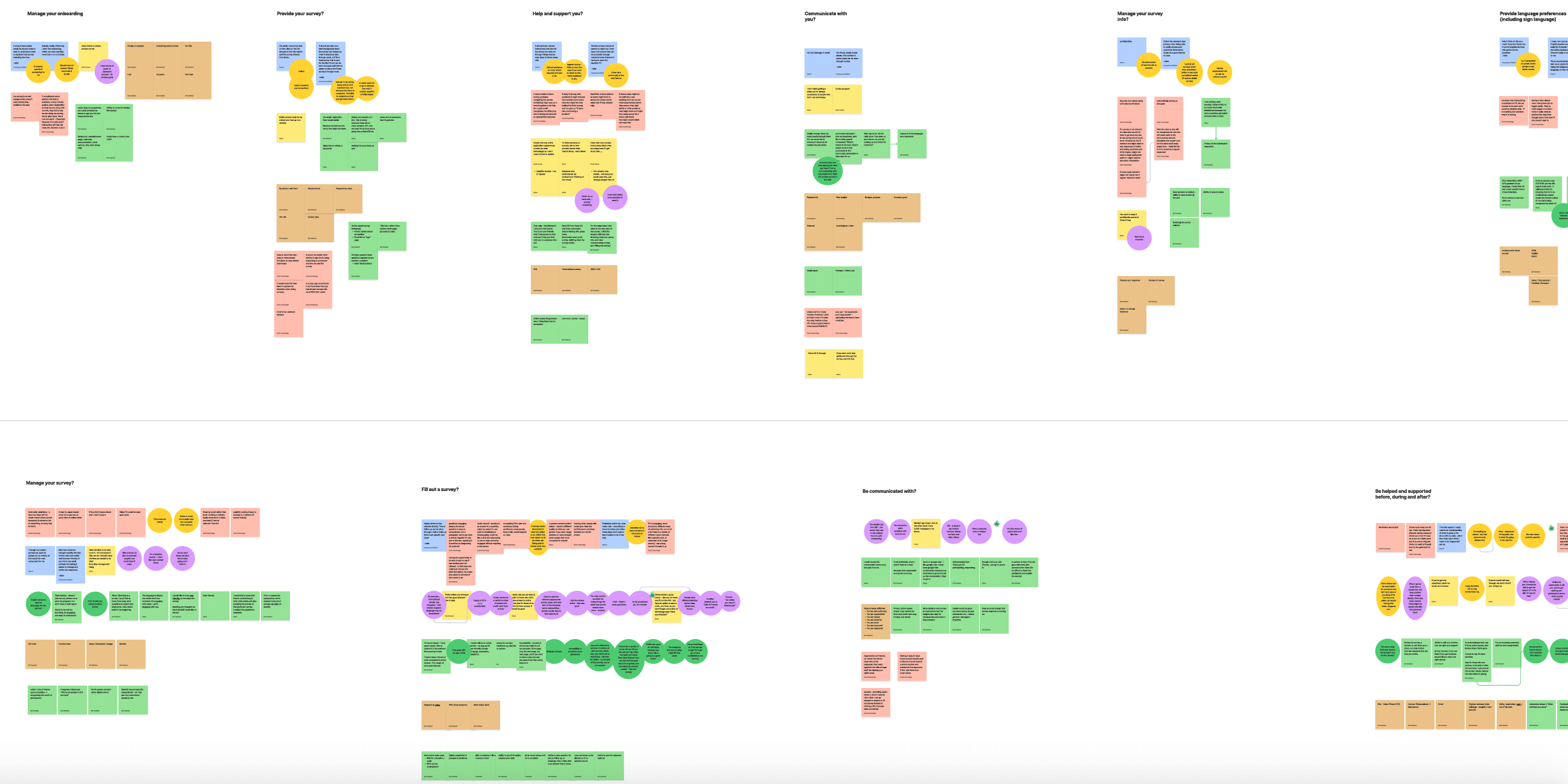The challenge
The previous NZ census had a historically low response rate, leading to poor representation from many demographics in Aotearoa. The Data Sourcing Project undertook the challenge to research how users interact with Stats NZ and effectively identify opportunities to design a better service to collect data from New Zealanders.
My contributions
As a senior designer, I lead the major workstream of the survey respondent experience research. This focused on gathering qualitative data around the entire experience of a survey response with Stats NZ.
For this, I designed the research plan with a UX-lead approach, identifying the research methodology and outputs to orate the research data. I then recruited for and planned workshops to speak to respondents in the public, as well as business respondents. As part of designing these workshops, I organised a team of UX designers and Business Analysts to assist with these workshops. This allowed us to make the most out of our time with the user and lead to a good sampling of qualitative data.
I followed with team insight-gathering, which lead to journey maps, and fed into blueprints, as well as other collateral. As a senior, I gave guidance and produced templates for the junior UX designers along the way.

